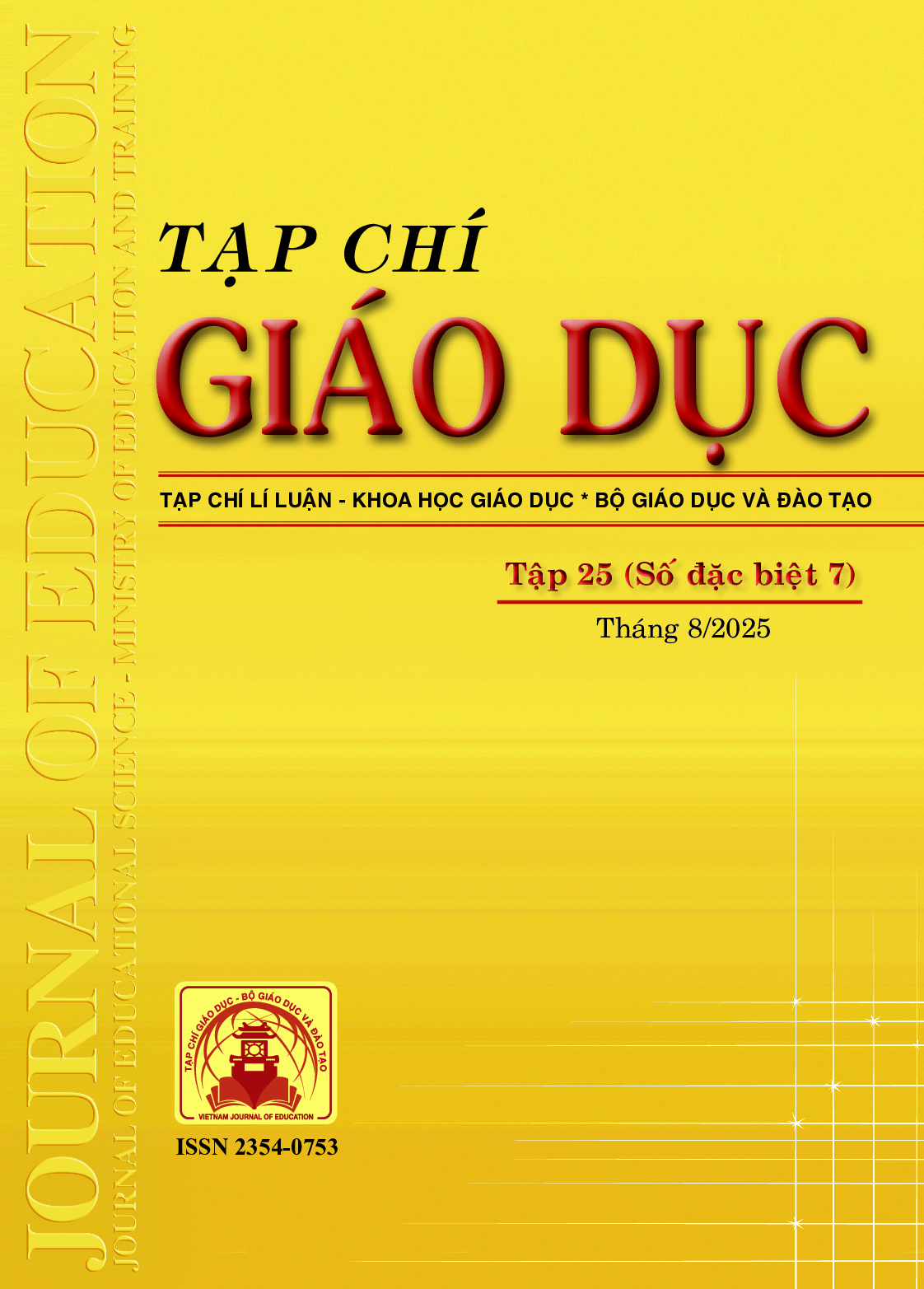Ứng dụng mô hình “lớp học đảo ngược” trong phát triển kĩ năng phát âm cho sinh viên ngành Ngôn ngữ Anh tại Trường Đại học Văn Hiến
Tóm tắt
Pronunciation is a vital skill for English learners, especially in non-native environments. Unfortunately, traditional teaching methods often overlook the importance of structured practice in this area. This research seeks to investigate how effective the flipped classroom approach is in improving pronunciation skills for English majors at Van Hien University. This study took a mixed methods approach and included 60 second-year students along with three English lecturers. The data were collected through questionnaires and semi-structured interviews, which took place after the model was implemented in four pronunciation sessions. The results showed that students had a good impression of the role of digital materials and pre-class preparation activities in improving accuracy, intonation, and fluency. Qualitative analysis of lecturers also indicated that this model promotes initiative and enhances learning motivation for students. The study has helped clarify the feasibility as well as the initial effectiveness of the flipped classroom model in developing pronunciation skills in the higher education environment in Vietnam.
Tài liệu tham khảo
Alnuhayt, S. S. (2018). Investigating the use of the flipped classroom method in an EFL vocabulary course. Journal of Language Teaching and Research, 9(2), 236. https://doi.org/10.17507/jltr.0902.03
Bergmann, J., & Sams, A. (2012). Flip your classroom: Reach every student in every class every day. Washington DC: International Society for Technology in Education.
Bloom, B. S. (1956). Taxonomy of Educational Objectives, Handbook: The Cognitive Domain. New York: David McKay.
Çakır, İ., & Baytar, B. (2014). Foreign language learners’ views on the importance of learning the target language pronunciation. Journal of Language and Linguistic Studies, 10(1), 99-110.
Cameron, S. (2012). Perfecting your English pronunciation. McGraw-Hill.
Chatta, B., & Haque, M. (2020). Improving paragraph writing skills of Saudi EFL university students using flipped classroom instruction. Arab World English Journal, 6, 228-247. https://doi.org/10.24093/awej/call6.15
Darcy, I., Rocca, B., & Hancock, Z. (2021). A window into the classroom: How teachers integrate pronunciation instruction. RELC Journal, 52(1), 110-127. https://doi.org/10.1177/0033688220964269
Duong, T. N. (2009). Mistake or Vietnamese English. VNU Journal of Foreign Studies, 25(1), 41-50.
Hendriks, B., van Meurs, F., & Usmany, N. (2023). The effects of lecturers’ non-native accent strength in English on intelligibility and attitudinal evaluations by native and non-native English students. Language Teaching Research, 27(6), 1378-1407. https://doi.org/10.1177/1362168820983145
Hughes, K. L., & Edwards, L. (2012). Teaching and learning in the dual enrollment classroom. New Directions for Higher Education, 158, 29-37. https://doi.org/10.1002/he.20012
Lin, H. C., Hwang, G. J., & Hsu, Y. D. (2019). Effects of ASQ-based flipped learning on nurse practitioner learners’ nursing skills, learning achievement and learning perceptions. Computers and Education, 139, 207-221. https://doi.org/10.1016/j.compedu.2019.05.014
Lo, C. K. (2020). Systematic reviews on flipped learning in various education contexts. In B. K. Zawacki-Richter, O., Kerres M., Bedenlier S., Bond M. (Ed.), Systematic Reviews in Educational Research (pp. 129-142). Wiesbaden: Springer Fachmedien.
Low, E. L. (2021). EIL pronunciation research and practice: Issues, challenges, and future directions. RELC Journal, 52(1), 22-34. https://doi.org/10.1177/0033688220987318
Mackey, A., & Gass, M. S. (2005). Second language research: Methodology and design. Mahwah, NJ: Lawrence Erlbaum Associates.
Nguyễn Thuý Nga (2023). Các yếu tố ảnh hưởng tới sự chủ động và hứng thú học tập của sinh viên Trường Đại học Giáo dục - Đại học Quốc gia Hà Nội trong lớp học đảo ngược. Tạp chí Giáo dục, 23(19), 40-45.
Nguyễn Trí Dũng, Nguyễn Thị Biên (2018). Các yếu tố ảnh hưởng đến dạy và học phát âm tiếng Anh. Tạp chí Khoa học Ngoại ngữ quân sự, 14, 78-85.
Petrova, V. (2021). On the study of English as a Lingua Franca: Challenges and perspectives. European Proceedings of Social and Behavioural Sciences. https://doi.org/10.15405/epsbs.2021.05.02.31
Prashant, P. D. (2018). Importance of pronunciation in English language communication. Research Papers in Economics, 7(2), 15-20.
Reid, E., & Debnarova, M. (2020). Focus on teaching pronunciation at primary schools in Slovakia. Ilkogretim Online, 19(3), 1740-1750. https://doi.org/10.17051/ilkonline.2020.734971
Roehling, P. V., Root Luna, L. M., Richie, F. J., & Shaughnessy, J. J. (2017). The benefits, drawbacks, and challenges of using the flipped classroom in an introduction to psychology course. Teaching of Psychology, 44(3), 183-192. https://doi.org/10.1177/0098628317711282
Tanner, M., & Scott, E. (2015). A flipped classroom approach to teaching systems analysis, design and implementation. Journal of Information Technology Education, 14, 219-241.
Tergujeff, E. (2013). Learner perspective on English pronunciation teaching in an EFL context. Research in Language, 11(1), 81-95. https://doi.org/10.2478/v10015-012-0010-z
Timmis, I. (2002). Native‐speaker norms and International English: a classroom view. ELT Journal, 56(3), 240-249. https://doi.org/10.1093/elt/56.3.240
Vygotsky, L. S. (1978). Mind in Society: The Development of Higher Psychological Processes. Cambridge, MA: Harvard University Press.
Zimmerman, B. J. (2002). Becoming a Self-Regulated Learner: An Overview. Theory Into Practice, 41(2), 64-70. https://doi.org/10.1207/s15430421tip4102_2
Đã Xuất bản
Cách trích dẫn
Số
Chuyên mục
Giấy phép

Tác phẩm này được cấp phép theo Ghi nhận tác giả của Creative Commons Giấy phép quốc tế 4.0 .












